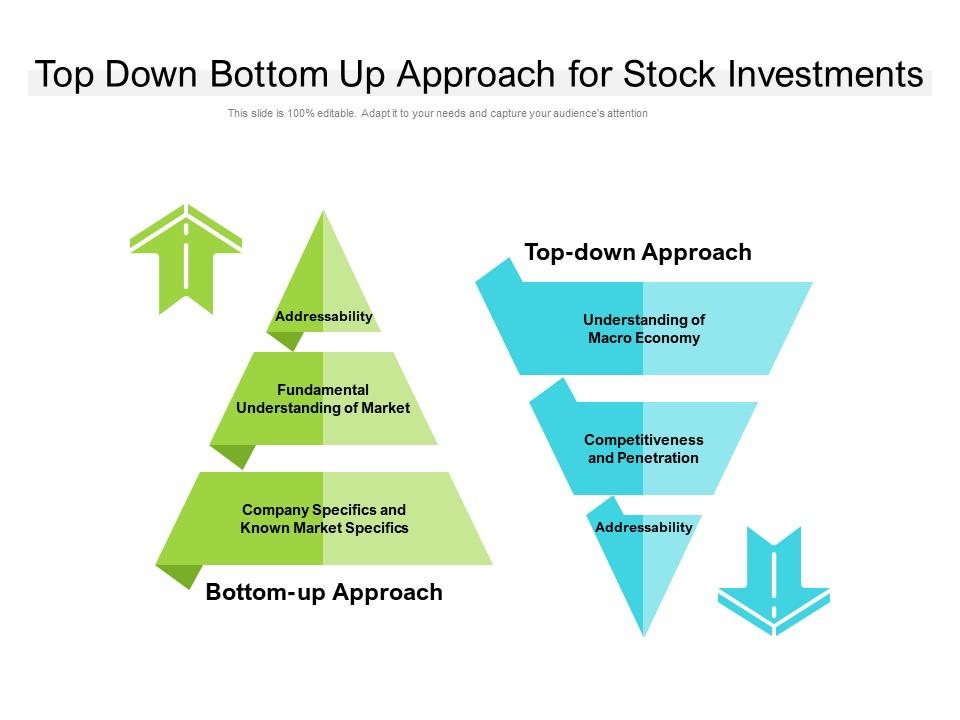Table Of Content
- Difference Between Top-down and Bottom-up Approach
- Which Management Style Is Right for You: Top-Down or Bottom-Up Approach?
- Over 200k developers and product managers use LogRocket to create better digital experiences
- When to Choose Bottom–Up Design over Top-Down Design
- Difference between Bottom-Up Model and Top-Down Model
- Leveraging Kumospace for a balanced management approach

The top-down and bottom-up approaches have gained traction in certain sectors of the workforce. Sometimes a highly authoritative upper management and a delegation of tasks is better than employees with fluid roles and a large say in the decisions of a company, and vice versa. Below is a conclusive list of the industries that embody certain management styles over others. There are many industries that benefit from this holistic style of business management. These users embody the use of a pieced together system that creates a more informed, complex company with targeted goals. Sometimes known as parsing, businesses analyze a sequence of information in order to determine its overall function and structure, which leads to the most comprehensive view of a project.
Bottom-up de novo design of functional proteins with complex structural features - Nature.com
Bottom-up de novo design of functional proteins with complex structural features.
Posted: Mon, 04 Jan 2021 08:00:00 GMT [source]
Difference Between Top-down and Bottom-up Approach
Since the decision-making process takes place at just one level of management, they can be finalized, distributed, and implemented much more quickly than decisions that require input from multiple leaders or project stakeholders. The top-down management style is common, which means there’s less of a learning curve for new hires if they came from a company that uses this structure. As a team leader, you can help new team members adjust more quickly by incorporating some familiar elements of top-down methodology into your management style. Then, once an action plan has been created, decision-makers communicate it to the rest of the team to be implemented (usually without much room for adjustment ). LogRocket identifies friction points in the user experience so you can make informed decisions about product and design changes that must happen to hit your goals.
Which Management Style Is Right for You: Top-Down or Bottom-Up Approach?
The engineering and management success of this project led to the spread of the top–down approach through IBM and the rest of the computer industry. Among other achievements, Niklaus Wirth, the developer of Pascal programming language, wrote the influential paper Program Development by Stepwise Refinement. Top–down methods were favored in software engineering until the late 1980s,[3] and object-oriented programming assisted in demonstrating the idea that both aspects of top-down and bottom-up programming could be used. In contrast, smaller, growing companies might find the bottom-up approach more suitable, as it encourages innovation, collaboration, and employee engagement.
Over 200k developers and product managers use LogRocket to create better digital experiences
Modern software design approaches usually combine top–down and bottom–up approaches. Although an understanding of the complete system is usually considered necessary for good design—leading theoretically to a top-down approach—most software projects attempt to make use of existing code to some degree. The top-down approach to management is a centralized strategy in which decisions are made at the highest level and then communicated down throughout the organization. It relies on higher authority figures to set larger goals that filter down to lower level employees, emphasizing an autocratic approach with no feedback or suggested solutions from staff. Integrating top-down and bottom-up approaches can bridge the divide between leadership and frontline teams, encouraging collaboration, innovation, and ownership for successful strategy implementation.
When to Choose Bottom–Up Design over Top-Down Design
Test out Asana’s workflow management software to build and track your team workflows and communication all in one place. Businesses leverage the bottom-up approach in an effort to produce the most comprehensive budget plan for all departments, resources, and employees. Visit our comprehensive project management guide for tips, best practices, and free resources to manage your work more effectively. Successful product managers are strategic thinkers, customer-focused innovators, adaptive problem solvers, and inspirational motivators.
Advantages of Bottom-Up Approach
Since process-related communication flows top to bottom in top-down companies, it’s easy for individuals and groups to become siloed and eventually feel isolated. Create opportunities for communication across departments, teams, management levels, and even geographical locations to help ensure that your team members can build meaningful relationships with each other. When approaching project objectives from the bottom up, a team will collaborate across all levels to determine what steps need to be taken to achieve overall goals. The bottom-up approach is newer and more flexible than the more formal top-down strategy, which is why it’s more commonly found in industries where disruption and innovation are a priority.
Changes in the top level of trophic levels have an inverse effect on the lower trophic levels. Top–down control can have negative effects on the surrounding ecosystem if there is a drastic change in the number of predators. When otters are removed, urchin populations grow and reduce the kelp forest creating urchin barrens. This reduces the diversity of the ecosystem as a whole and can have detrimental effects on all of the other organisms. In other words, such ecosystems are not controlled by productivity of the kelp, but rather, a top predator.
iOS 16 notifications: How to change the new design - 9to5Mac
iOS 16 notifications: How to change the new design.
Posted: Tue, 21 Nov 2023 08:00:00 GMT [source]
Difference between Bottom-Up Model and Top-Down Model
The top-down policy, also referred to as autocratic leadership, is a management process driven by a business’ upper level of executives. The two main definitions are that bottom–up processing is determined directly by environmental stimuli rather than the individual's knowledge and expectations (Koch, 2022). Top–down approaches emphasize planning and a complete understanding of the system. It is inherent that no coding can begin until a sufficient level of detail has been reached in the design of at least some part of the system.

Leveraging Kumospace for a balanced management approach
It is a design methodology in which each component is designed as a separate part without any reference to other components in the assembly. In the investing world, top-down investors or investment strategies focus on the macroeconomic environment and cycle. These types of investors usually want to balance consumer discretionary investing against staples depending on the current economy.

Bottom-up investing begins its research at the company level but does not stop there. These analyses weigh company fundamentals heavily but also look at the sector, and microeconomic factors as well. As such, bottom-up investing can be somewhat broad across an entire industry or laser-focused on identifying key attributes. Each approach can be quite simple — the top-down approach goes from the general to the specific, and the bottom-up approach begins at the specific and moves to the general. These methods are possible approaches for a wide range of endeavors, such as goal setting, budgeting, and forecasting.
The primary distinction between top-down and bottom-up decision-making lies in the direction of communication and the involvement of the management team. Each approach has specific objectives, including strategic planning, instruction, and the construction of a successful leadership system that benefits the organization and generates revenue. In conclusion, understanding the differences between top-down and bottom-up approaches and their respective advantages and disadvantages is crucial for determining the most suitable management style for your organization. By considering factors such as company size, structure, organizational culture, and industry, you can tailor your management approach to foster a more engaged, motivated, and productive workforce.
These contrasting styles can significantly impact organizational decision-making, employee engagement, and overall performance. This comprehensive guide offers a fresh perspective on these approaches, diving deep into their pros and cons, real-life examples, and best practices for integration. Get ready to discover how to choose and implement the most suitable management style for your organization, leading to a more engaged, motivated, and productive workforce.
You should not rely on one approach exclusively, but rather use them in combination to achieve optimal results. One way to do this is to use an iterative or incremental process, where you alternate between top-down and bottom-up phases. The bottom-up approach is based on the assumption that the employees have the best knowledge and experience of the daily operations and challenges of the organization. They are able to provide valuable insights and suggestions that can improve the quality and effectiveness of the decisions. Time is not lost during this testing since it does not wait for all modules to be produced.
In addition, when a system has to be developed from some preexisting components, the bottom-up method is superior since it is more appropriate. One challenge with the top-down management approach is that it requires proactive work to keep non-leadership team members feeling engaged, connected, and respected. When all decisions are made at the top, the rest of the team might feel that their feedback and opinions aren’t valued. The development of the top-down and bottom-up approaches was a result of trial and error in managing, maintaining, and achieving success in a business. Although there are great differences in the two styles, both were created by developing a system that resulted in the most success, revenue, and employee happiness. Keeping all employees, business processes, and departments in mind, leaders who adopt the bottom-up approach encourage input from all areas of the organization.

No comments:
Post a Comment